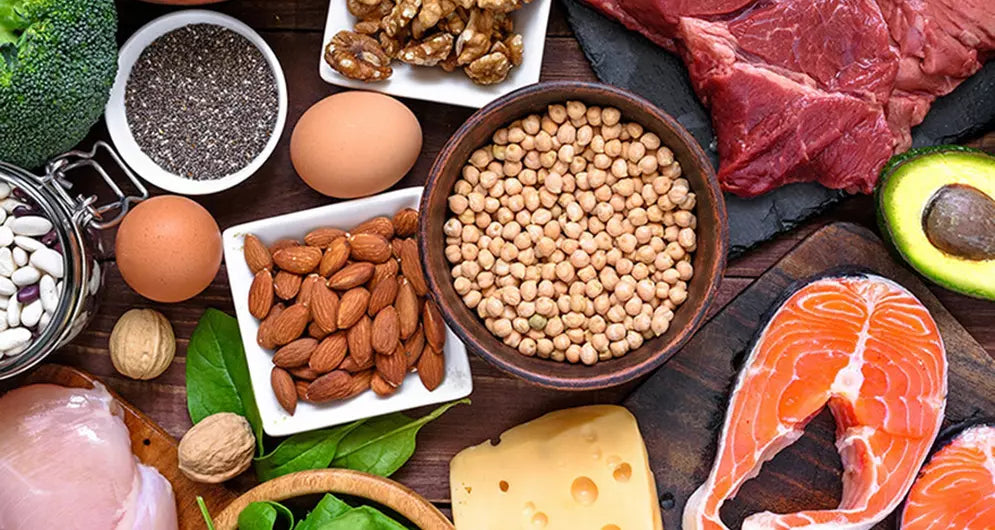Are proteins created equal? While the short answer is no, the truth is that protein is a little more complex than a simple yes or no. Let’s take a closer look at what protein is, what it’s made up of and the different dietary sources that protein can be found in.
Protein is an essential macronutrient that is vital for life. Protein is made from twenty-plus basic building blocks, called amino acids. Because we do not store amino acids, our bodies make them in two different ways: either from scratch or by modifying others. There are nine essential amino acids (EAAs) that we must consume through our diet: histidine, isoleucine, leucine, lysine, methionine, phenylalanine, threonine, tryptophan, and valine. Each type of protein is made up of its own amino acid profile, which is why it is generally recommended to consume a variety of protein sources throughout the day to ensure a range of amino acids are being taken in.
Often times, proteins are categorized as complete or incomplete. Proteins are classified as “complete” if they naturally contain all of the essential amino acids (those that must be consumed through the diet). Animal proteins are complete proteins, and there are some plant-based proteins that are also complete, such as soy products, pistachios, and quinoa. Proteins are classified as “incomplete” if they are low or lacking in one or more essential amino acids. Examples of incomplete proteins include collagen and plant sources such as nuts, seeds, beans or rice. Did you know that if you combine certain types of incomplete protein sources together, you can form a complete protein? A great example of this is combining beans and rice to make a complete protein. One is low in the amino acid methionine, while the other is high in methionine.
Protein quality depends not only on the amino acid profile of the protein-containing food or beverage, but also the ease and rate of digestion, which can vary from one protein source to another. Some proteins are more readily digested than others, as our bodies are generally able to pull all of the amino acids from animal sources, such as milk. On the flip side, the amino acids in chia seeds are not as readily digested and absorbed. Generally speaking, animal sources of protein are more readily digested, compared to plant sources.
Healthy adults should aim to get 0.8 – 2.2 g of protein per kilogram of bodyweight each day. By varying the types of protein sources you take in each day, you will also vary the consumption of amino acids consumed. If the majority of your protein is coming from plant-based sources, try adding a variety of plant proteins to help ensure you’re getting all of the amino acids you need.
Examples of protein-containing dietary sources include:.
Meat
• Beef
• Pork
• Poultry (chicken, duck, turkey)
• Game meats
Seafood
• Salmon
• Mackerel
• Tuna
• Trout
• Herring
• Cod
Plant-based
• Soy products such as tempeh, tofu, and edamame
• Grains such as amaranth, quinoa, barley, buckwheat, oats or rye
• Nuts and seeds, nut butters, nut-based beverages
• Seitan
Miscellaneous
• Eggs
• Dairy products such as whey, cheese, milk, yogurt, and cottage cheese





